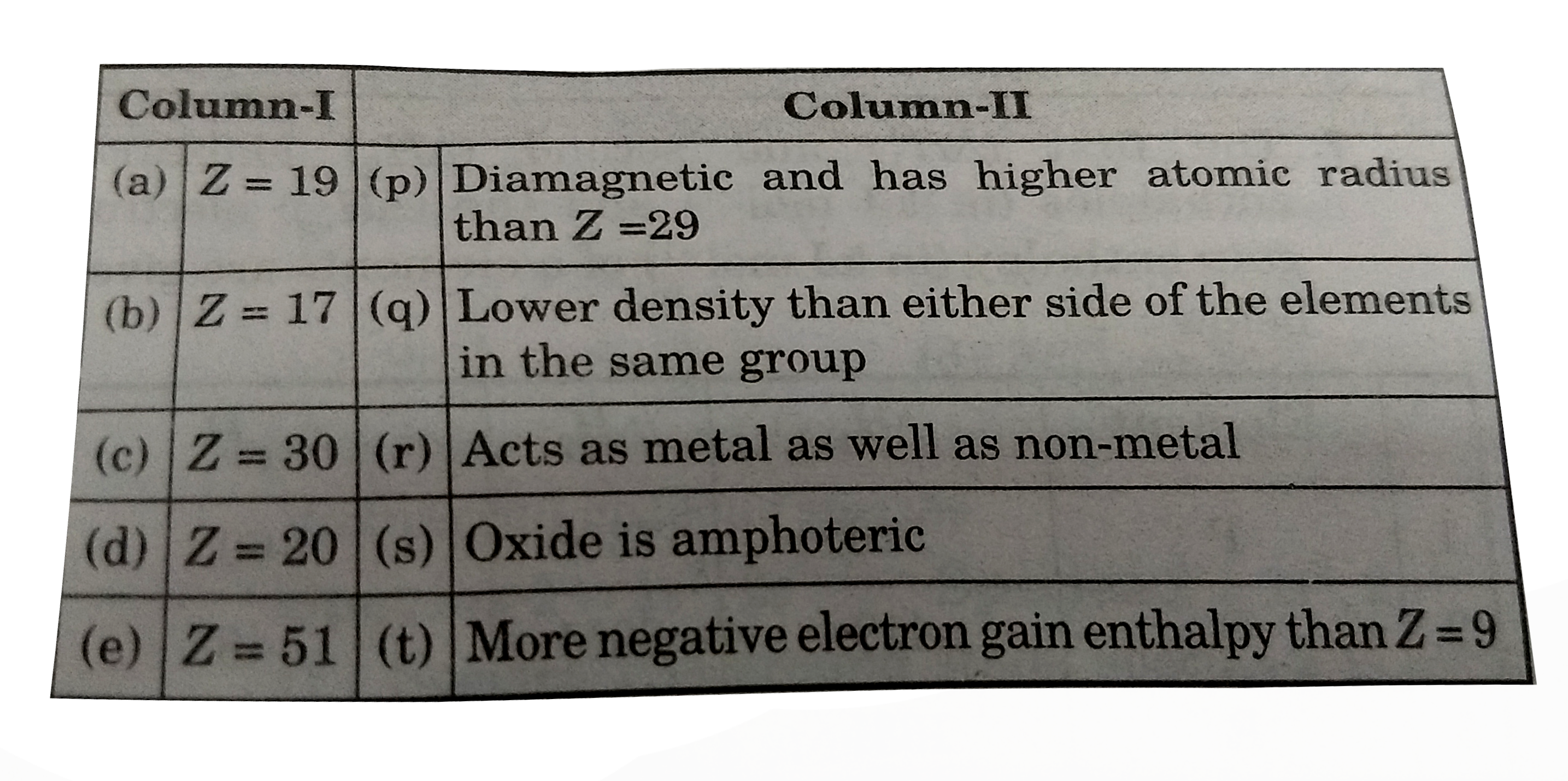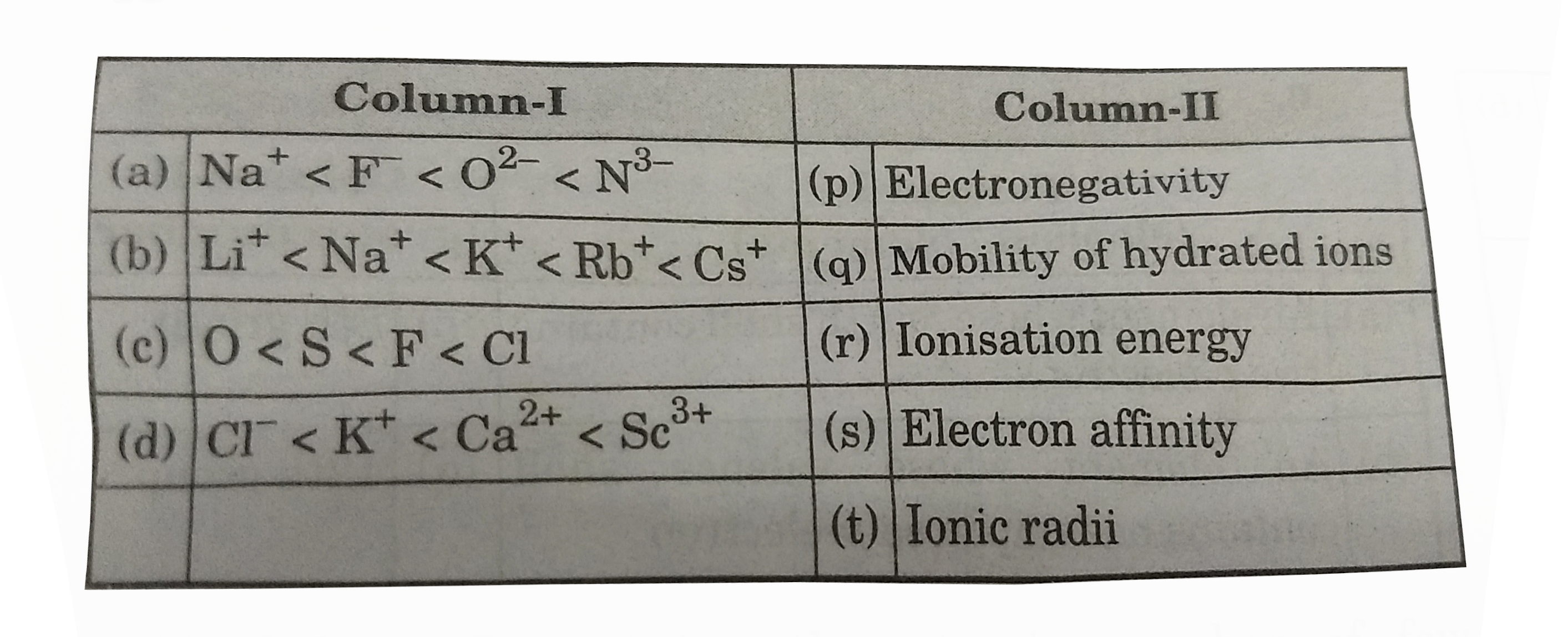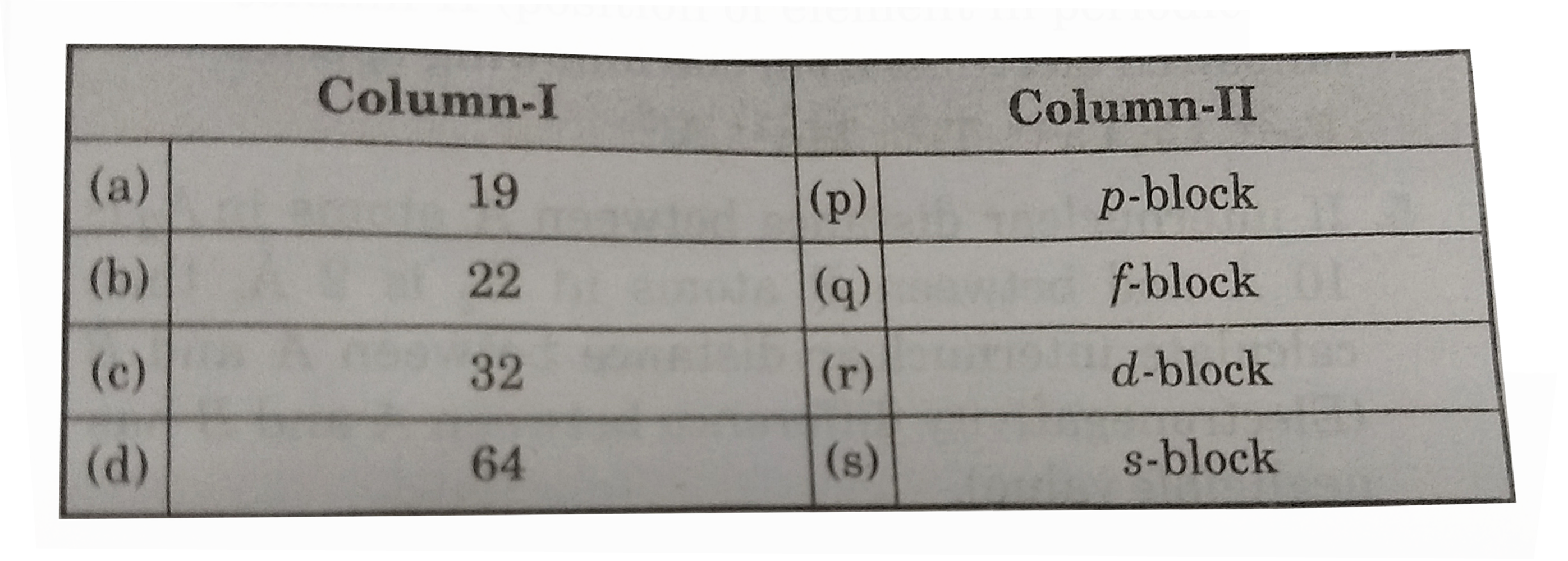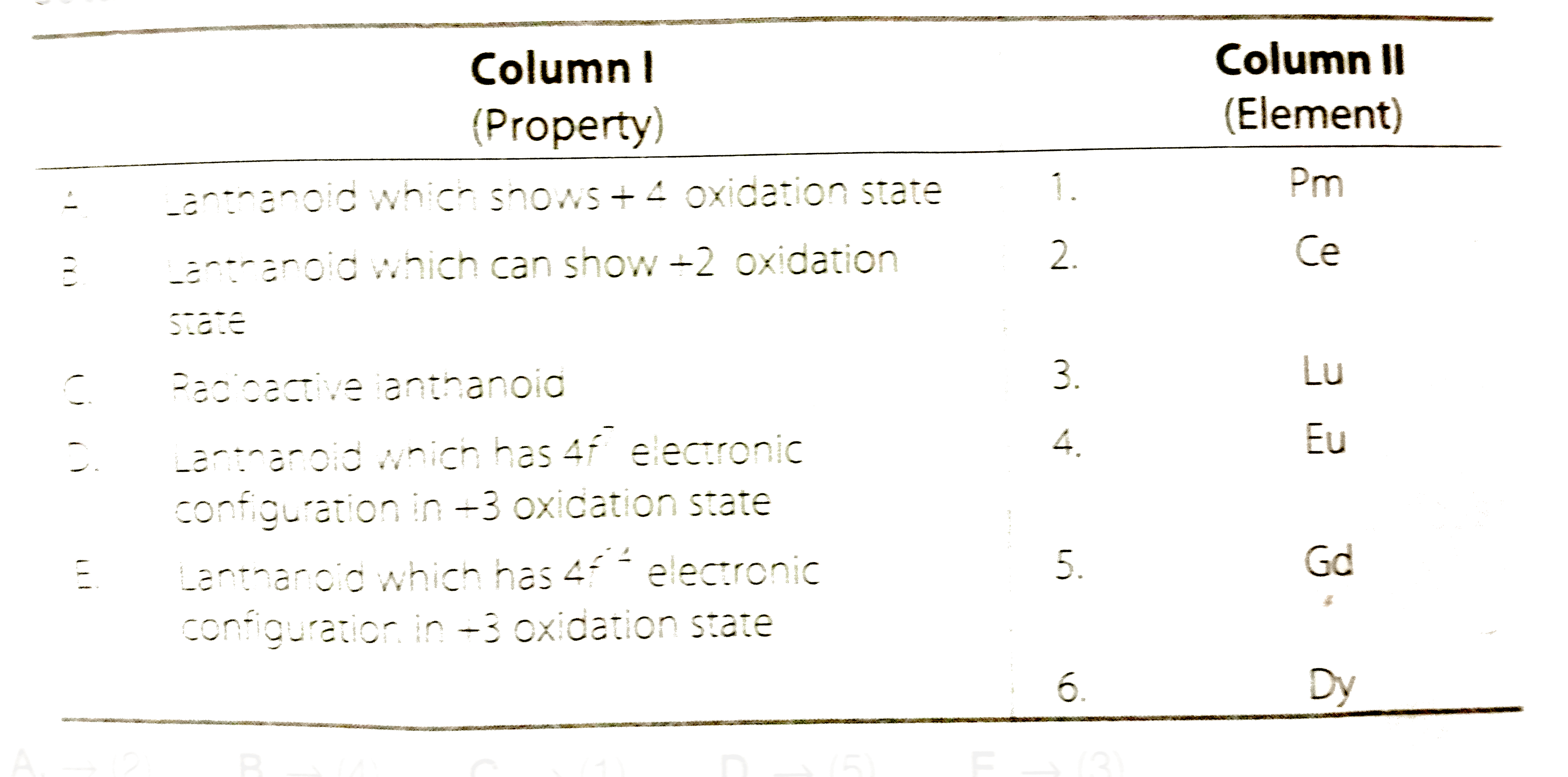Column-I contains the atomic number of few elements and column-II has the properties of the elements/salts.

The correct Answer is:(a-q), (b-t), (c-p,s), (d-p), (e-r,s)
Step by step video, text & image solution for Column-I contains the atomic number of few elements and column-II has the properties of the elements/salts. by Chemistry experts to help you in doubts & scoring excellent marks in Class 11 exams.
Updated on:21/07/2023Topper's Solved these Questions
- PERIODIC TABLEBOOK - GRB PUBLICATIONCHAPTER - PERIODIC TABLEEXERCISE - Subjective Type
32 Videos
- PERIODIC TABLEBOOK - GRB PUBLICATIONCHAPTER - PERIODIC TABLEEXERCISE - Comprehension 20
1 Video
- NOMENCLATURE AND CLASSIFICATIONBOOK - GRB PUBLICATIONCHAPTER - NOMENCLATURE AND CLASSIFICATIONEXERCISE - Subjective Type
24 Videos
- PRACTICAL ORGANIC CHEMISTRYBOOK - GRB PUBLICATIONCHAPTER - PRACTICAL ORGANIC CHEMISTRYEXERCISE - Exercise 4 (Matrix match type )
1 Video
Similar Questions
0.5 moles of gaseous non-metallic X− anions (having positive electron affinity) requires 806.4 kJ energy to get completely converted into gaseous X+ ions. Calculate Pauling's electronegativity of the elements X. Use Avogardo's no =6×1023 and 1eV=1.6×10−19J.
[Use the fact that, Pauling's electronegativity
=Mulliken's electronegativity2.8 and Mulliken's electronegativity =Ionisation energy+ Electron affinity2]
View SolutionIonisation energies of unknown elements are given below :
∣∣ ∣ ∣ ∣ ∣ ∣ ∣∣ElementIE(in kcal/mol) I IIIII M209 548919 N100 7351101 O119 10921653 P1500 20172320∣∣ ∣ ∣ ∣ ∣ ∣ ∣∣
Which pair of elements may represent same group?
View SolutionHow many alkyl groups are possible for iso-octane?
View SolutionColumn(I)Column(II)(a)Ph−O∣∣C−CH3P.Aldol condensation(b)CH3−O∣∣C−HQ.Positive iodoform test(c)Ph−O∣∣C−HR.Negative test of Fehling's solution(d)CH3CH2OHS.Oxidation withCu/Δ
View SolutionMatch Column-I (atomic number of elements) with Column-II (position of element in periodic table)
View SolutionColumn-I contains some increasing orders of various species and column-II has the properties of the elements/ions.

View SolutionMatch column-II (atomic number of elements) with column-II (position of element in periodic table).

View SolutionMatch the property given in Column I with the element given in Column II.

View SolutionMatch the property given in Column I with the element given in Column II.
View SolutionMatch the elements given in column I with the properties mentioned in Column II.
View SolutionMatch the element in Column I with the properties mentioned in Column II

View SolutionMatch the properties given in column I with the element given in column II
View SolutionMatch the property (column I) with the element (column II)

View SolutionMatch the element in Column-I with the periodic property in Column-II

View SolutionMatch the property given in Column I with the element given in Column II.

View Solution